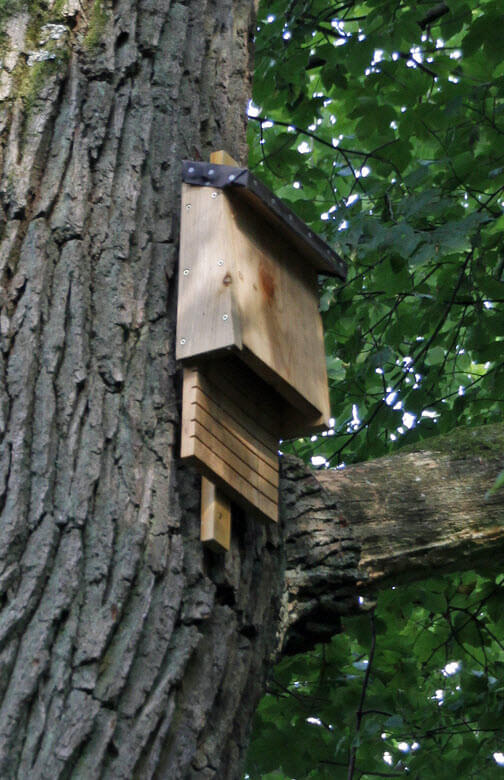
Attracting Bats to your Backyard
Posted by Grange Co-op on 25th Jan 2017
Bats are extremely beneficial mammals. Once their value for insect control is realized, many people want to encourage bats to live in their yards. Like all animals, bats have three basic necessities for life: food, water, and shelter. Here are some ways to attract bats to your yard:
KEEP YOUR BACKYARD NATURAL: Keeping natural habitats such as trees, woods, and especially dead snags will provide homes for many bats species.
PUT UP BAT HOUSES: Colony-roosting bats may use bat houses. As more natural habitat is destroyed, more bats will be looking for alternative places to roost. Bat houses, properly designed, can provide certain species of bats a place to live. The most common bats in our area to use bat houses are the Big Brown Bat and the Little Brown Bat.
PUT IN A POND OR POOL: Installing a pond or other water source may be a good way to attract bats. Many people have bats skimming across their swimming pools at dusk, drinking the water.
LIMIT YOUR USE OF PESTICIDES: Pesticides may kill insect pests in your yard, but they can also harm bats. If you need to control insects in your yard, try to use a natural pesticide, such as diatomaceous earth. Remember, the more bats that take up residence, the more insects they will eat, which will leave fewer to bother you.
TURN ON THE LIGHTS: Floodlights or porch lights attract insects, which in turn will attract bats. Make sure your bat house is placed high above the ground.

BAT HOUSES: Whether you purchase a bat house or you decide to make your own. Features of a well made bat house necessary to increase occupancy rates include:
- Weather-resistant wood is preferred, (cedar or exterior grade plywood).
- Screws, (galvanized), are better than nails.
- Caulk throughout the upper part of the house will keep the bats warm and dry.
- The inside of the house should have plastic mesh, grooves, or very rough surfaces so the bats can hang easily.
- The house should be at least 24” tall and 14” wide. They can have one or more chambers.
- The entrance slot to each chamber should be ¾ - 1” deep, (no deeper), to protect bats from predators, such as jays, raccoons, or snakes.
- The house should have a landing area that extends 4-6 inches below the entrance, to allow the bats an easy way to get in and out.
- The house should have various temperature zones. A ceiling at the top of the house and a ventilation slot about a third of the way from the bottom will give the bats warmer and cooler areas to move to.
BAT HOUSE PLACEMENT: Houses mounted on poles and sides of buildings work much better than those placed on trees. Trees usually block the bats’ view of the house and tree-mounted houses tend to be shady and cooler than the bats prefer. If the house is mounted on a pole, a predator guard should be used. When choosing a site for your bat house keep in mind:
- Bat houses should be mounted at least 12’ off the ground, the higher the better. In order to take flight, they usually need to free-fall several feet when leaving the house at night.
- Bats need an open area, (at least 15 - 20 feet of clearance) around the entrance to give them room to swoop into and out of the house.
- Bats like a warm place to raise their young. Bat houses should face south or southeast to take advantage of direct sunlight. Houses should receive at least 6-8 hours of direct sunlight daily. Painting the outside (only) of houses with a non-toxic black paint will help to absorb the sun’s heat.
- Putting up more than one house will increase your chances of occupancy.
- Nursery colony boxes, multiple chambers, seem to work a little better than bachelor boxes. Nursery colonies need a warmer home, (80 to 100 degrees), than a colony of bachelors.
- The closer to a water source, the better, but water can be anywhere within a 10 mile radius.
- Bat houses do not work in heavy woods.
CHECKING FOR OCCUPANCY:
Bats usually start occupying a bat house in early spring after the hibernation season. Boxes in the North are occupied from April to October. The easiest way to see if bats have moved in is to check with a strong flashlight in the morning, when they are least active. You can also place a piece of cardboard or screen under the house and look each day for guano, (droppings). Another way is to watch the house around sunset to see them exit. If the house is not occupied within two years, move it to a warmer or cooler location.
